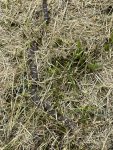^^^^^I looked up what type of snake it was in my snake identification book, and it said it was a venomous snake, but I might have misidentified it. I don't care, as long as I don't see it again. I respect snakes living in the wild, but not living in my garage.
This is my position as well. We live in the country on property we own. I've been an avid outdoors-man all of my life and have no fear of snakes. Encounter them fairly often. But I can't allow 'venomous' snakes up around the house or outbuildings near the house.
On occasion it is necessary (or at least the most expedient thing to do) to dispatch a snake.
A couple of years ago in the early fall...I was cutting and splitting firewood down near my shop. When out from under a storage shed came a Copperhead. It immediately assumed a defense posture and was acting uncharacteristically aggressive. Typically, they are more than happy to flee.
This snake was acting as if I were an intruder on its territory. NEVER seen that from a Copperhead before.
I decided right then and there that this particular snake doesn't need to be where I am constantly working, reaching in and around things.
Since I had the chainsaw still idling on the ground and the snake still sitting there feigning strikes I thought I would just take care of the problem.
Here is a little PRO TIP:
IF you decide to to dispatch a snake with a chainsaw, use the TOP of the bar. As soon as lowered the saw onto the snake the chain (moving my direction) snatched the snake right up around my feet! I mean RIGHT on my feet. EEEK........!
So use the TOP of the bar where the chain is moving away from you.



